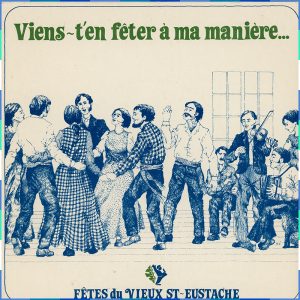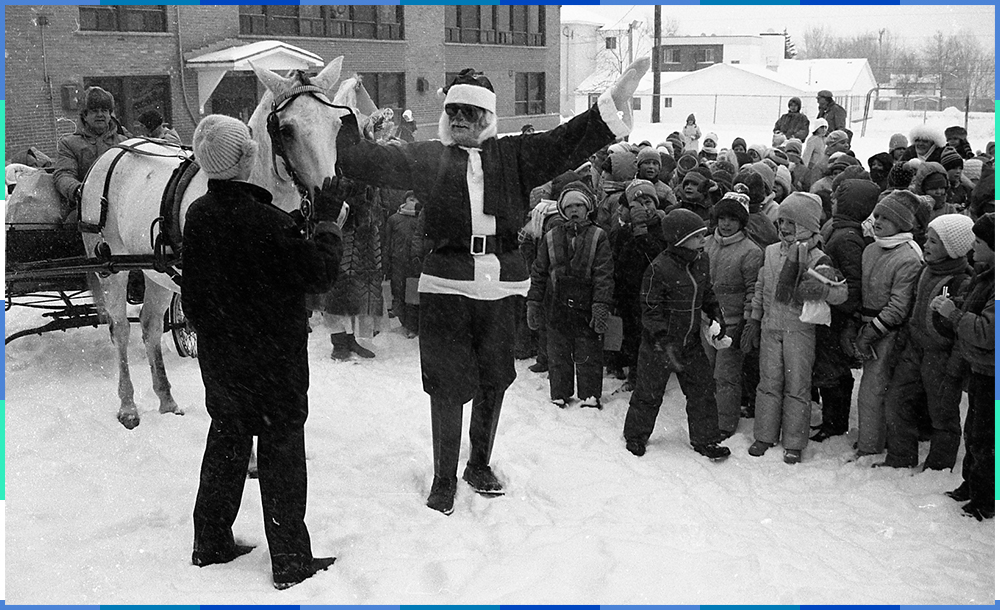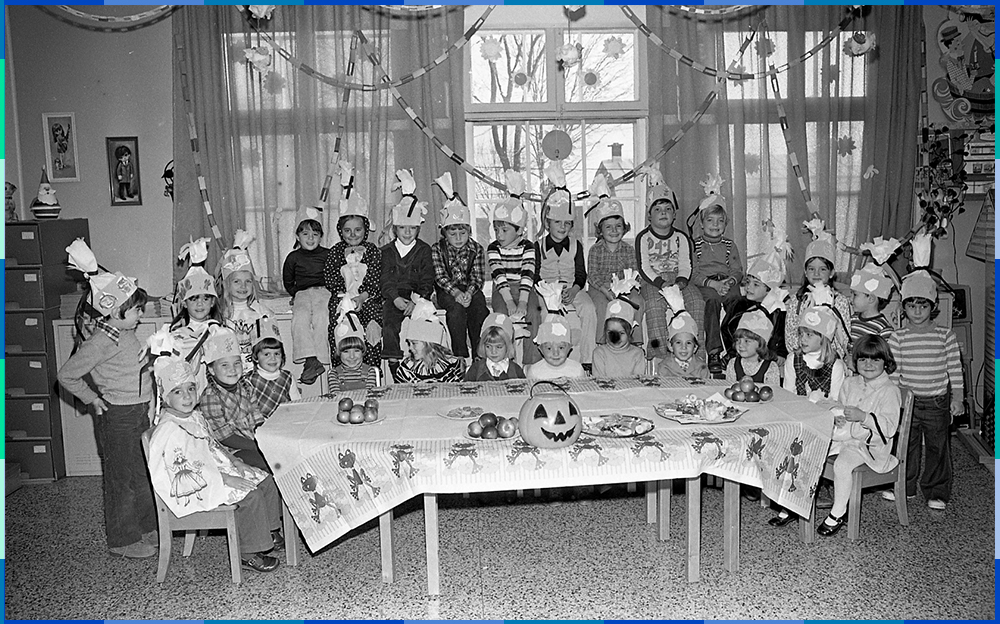Celebrating in the Old Days
Your grandpa has been up for hours and is out in his little vegetable garden in the backyard. You imagine him getting up in the middle of the night just to watch his tomatoes grow.
He hears you coming and looks up:
Need a couple of bucks?
Aw, grandpa, I don’t always ask you for money!
You sulk for a moment and then, you say:
Actually, I was wondering, what was a veillée in the olden days?

Illustration of a veillée on the sleeve of a 45 RPM record from the Fêtes du Vieux Saint-Eustache, 1978
He leans on his shovel and explains to you that until very recently, in the 1960s, it was church holidays, like Christmas, Easter and Corpus Christi, that punctuated the lives of most families in Québec. When there was no religious holiday, people got together for veillées. While the village priest didn’t always approve, these were very popular festive gatherings, especially in winter. During the cold season there was less work to do, particularly for farmers. So, it was easier for people to get all their family, friends, and neighbours together at their homes to sing and dance.
Accompanied by fiddles, tapping feet, and sometimes other instruments, the dancers followed a “caller” who would call out the different steps one after the other. People would organize a veillée just for fun, or to mark a special occasion.
In his family, the biggest veillées he remembers were for New Year’s. In fact, when he was younger, January 1st was the biggest celebration of the year. He explains:
Celebrating New Year’s in the early 20th century. Listen to the audio excerpt in French, the written transcription is available in English.
Apparently, your older sister is awake – you can hear the record she’s playing from the garden. Your grandpa raises his voice over the music.
It’s not like it used to be, you know! Over the last few years people have turned away from religion, and veillées are less and less popular. But I don’t think that means people have forgotten how to celebrate. There’s still Christmas, New Year’s, carnivals, festivals…
Your sister’s music is starting to get on your nerves, so you go back into the house.



